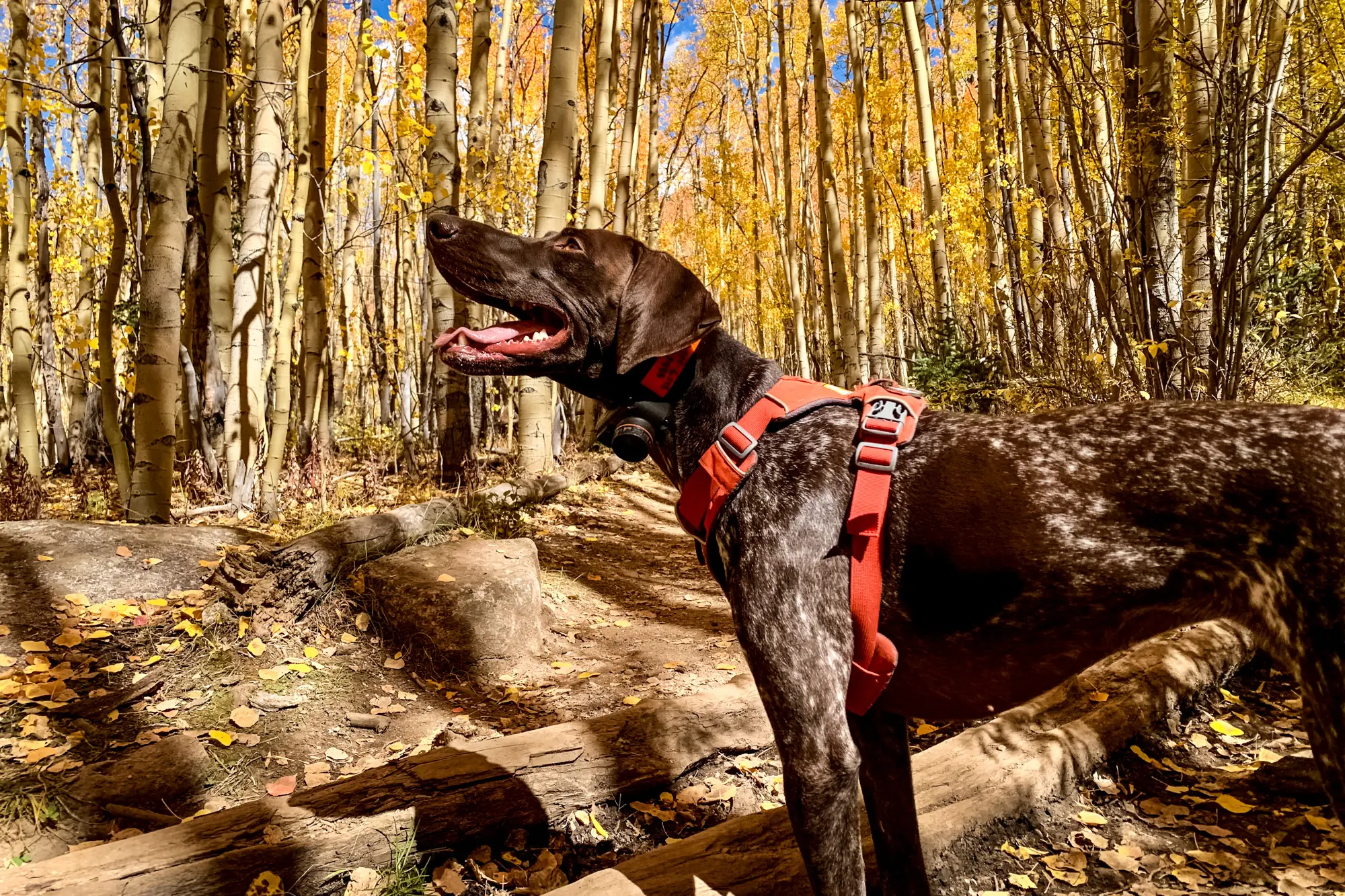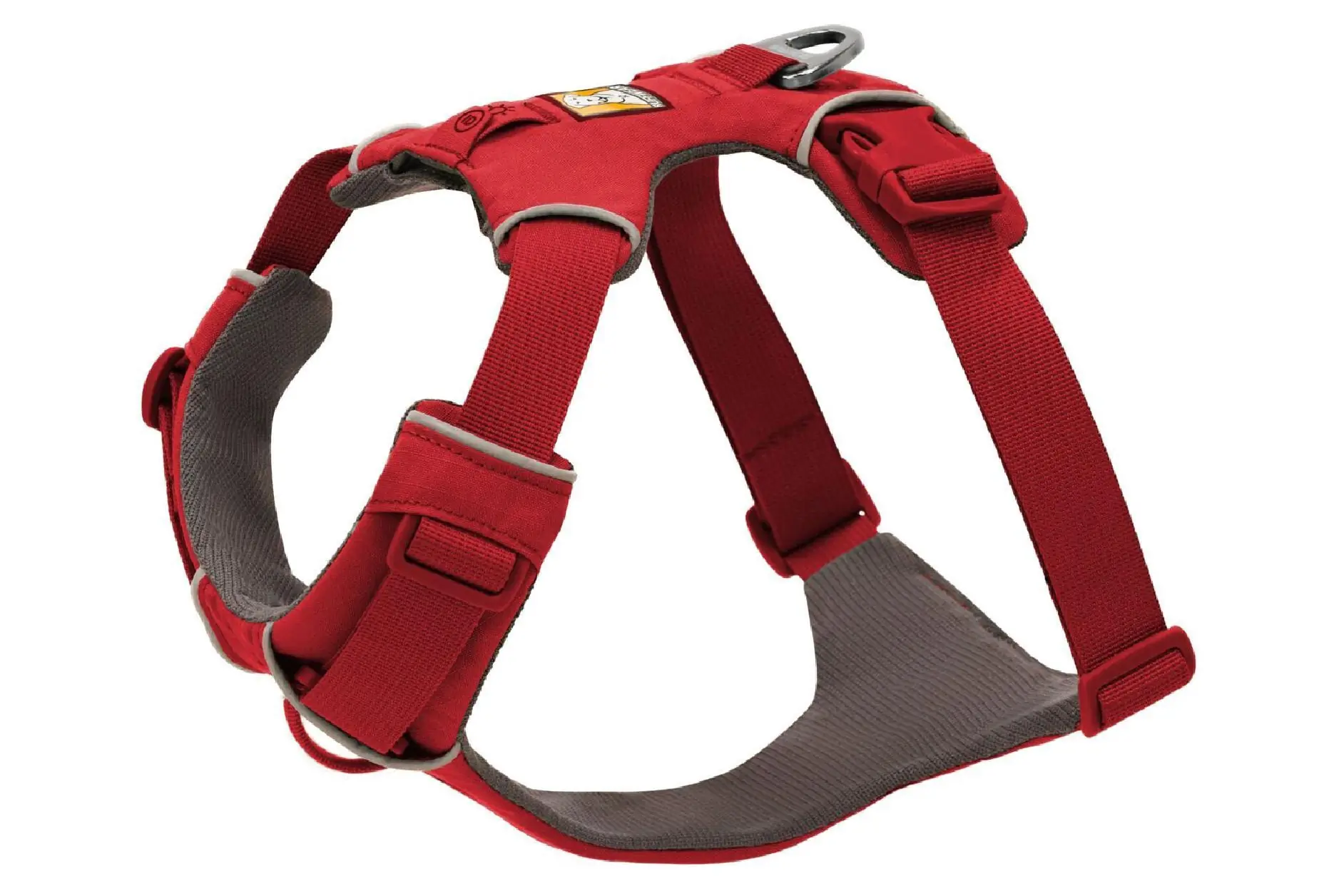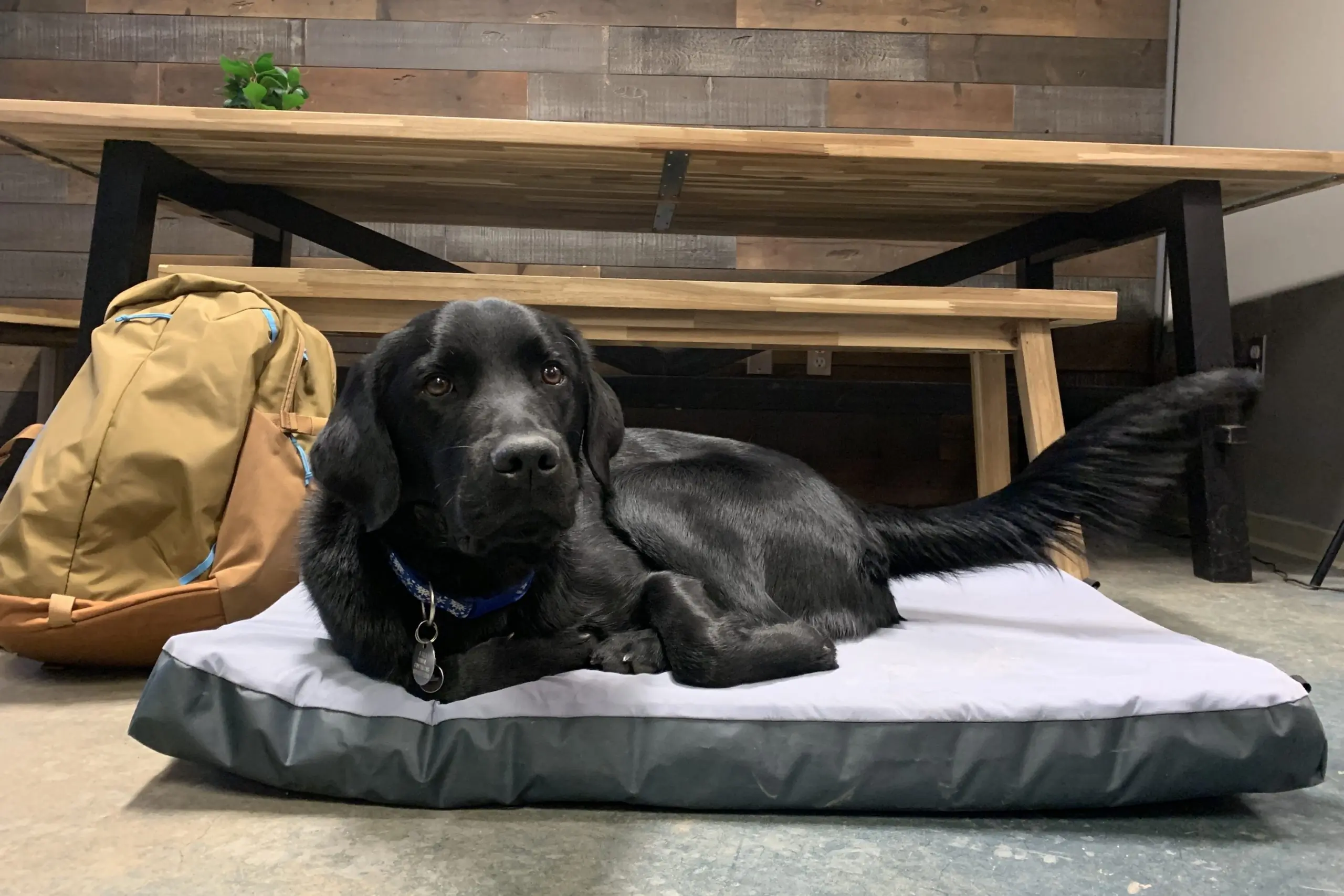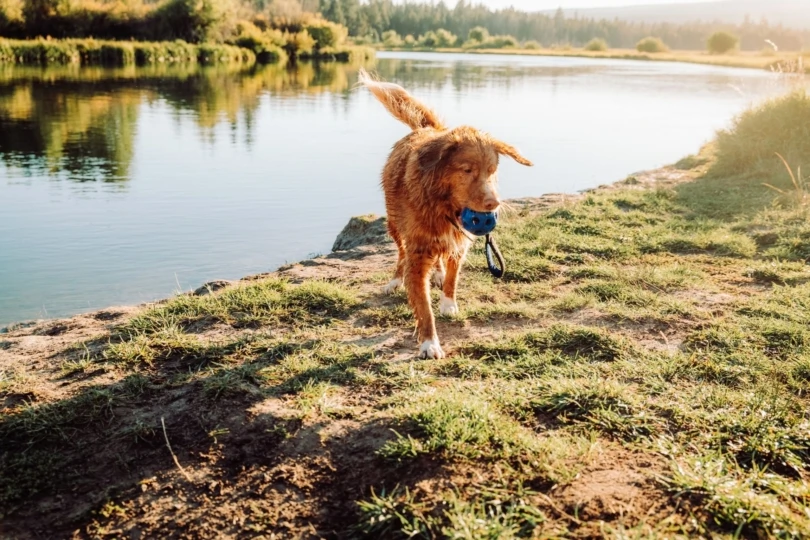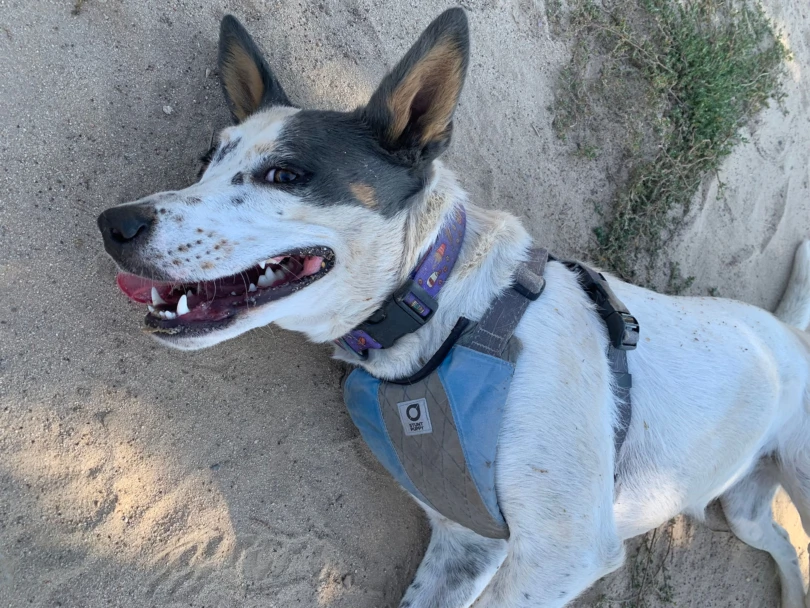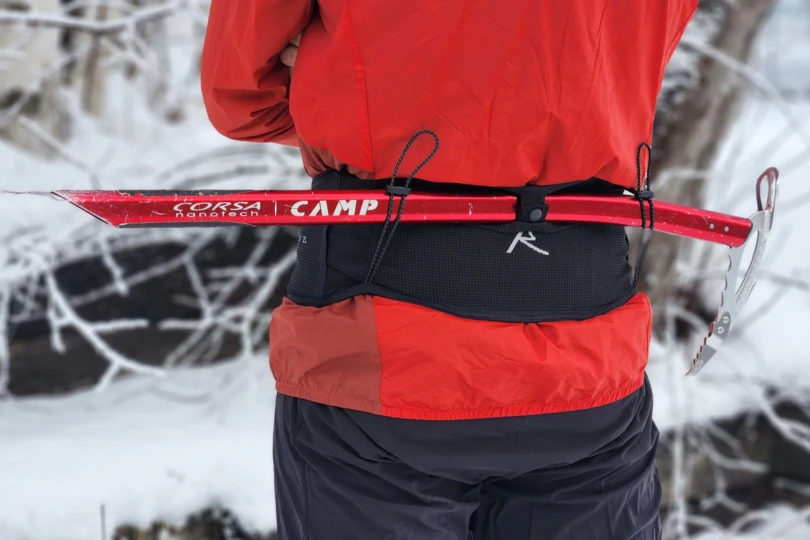My dog’s a puller. Now, before you lambast me for my poor dog training, yes, I suspect I’m part of the problem.
To call my girl high-strung is an understatement. A 5-year-old German shorthaired pointer, Leika loves to pull, particularly if I happen to be wearing cross-country skis. So you see, as an avid skier and trail runner, she’s never been very dissuaded from pulling. And when it comes to skiing, it’s very much encouraged.
But while we spend a lot of time blasting through fields and trails tethered together, there are also many more mundane walks to the park or around the city. And then, well, pulling kind of sucks. Fortunately, the Front Range No Pull Dog Harness offers something of a solution and is tough enough to handle a powerful, rambunctious animal for a very long time.
In short: The Ruffwear Front Range Dog Harness is easy to put on, padded, and durable. It offers two attachment points, one that lets dogs pull hard, and another on the front that dissuades pulling. It is very durable and easy to adjust, but my favorite aspect is the overall simplicity.
Editor’s note: Ruffwear made some minor changes to the Front Country harness in spring 2024. After testing the new version for 2 months, I concluded that it is functionally the same as the previous edition. The only differences are that the buckles are slightly more refined and easier to adjust, and the front attachment point now has a plastic coating over the fabric. These minor changes improve the already great harness. The photo below shows the new version, launched in spring 2024.

- Materials: 300-denier ripstop polyester/closed-cell foam/nylon webbing
- Leash attachment points: Two
- Sizes available: XS-XL
- Best for: Daily walks and hikes
Pros
- Four points of adjustment for easy fitting
- Fully padded for maximum comfort
- Light, breathable mesh lining prevents overheating
- Dual attachment points offer good options for training and everyday use
- Heavy-duty and easy to wash
Cons
- Must be put on over dog’s head
- Neck and chest straps may be loose on dogs with small necks
Ruffwear Front Range Dog Harness Testing
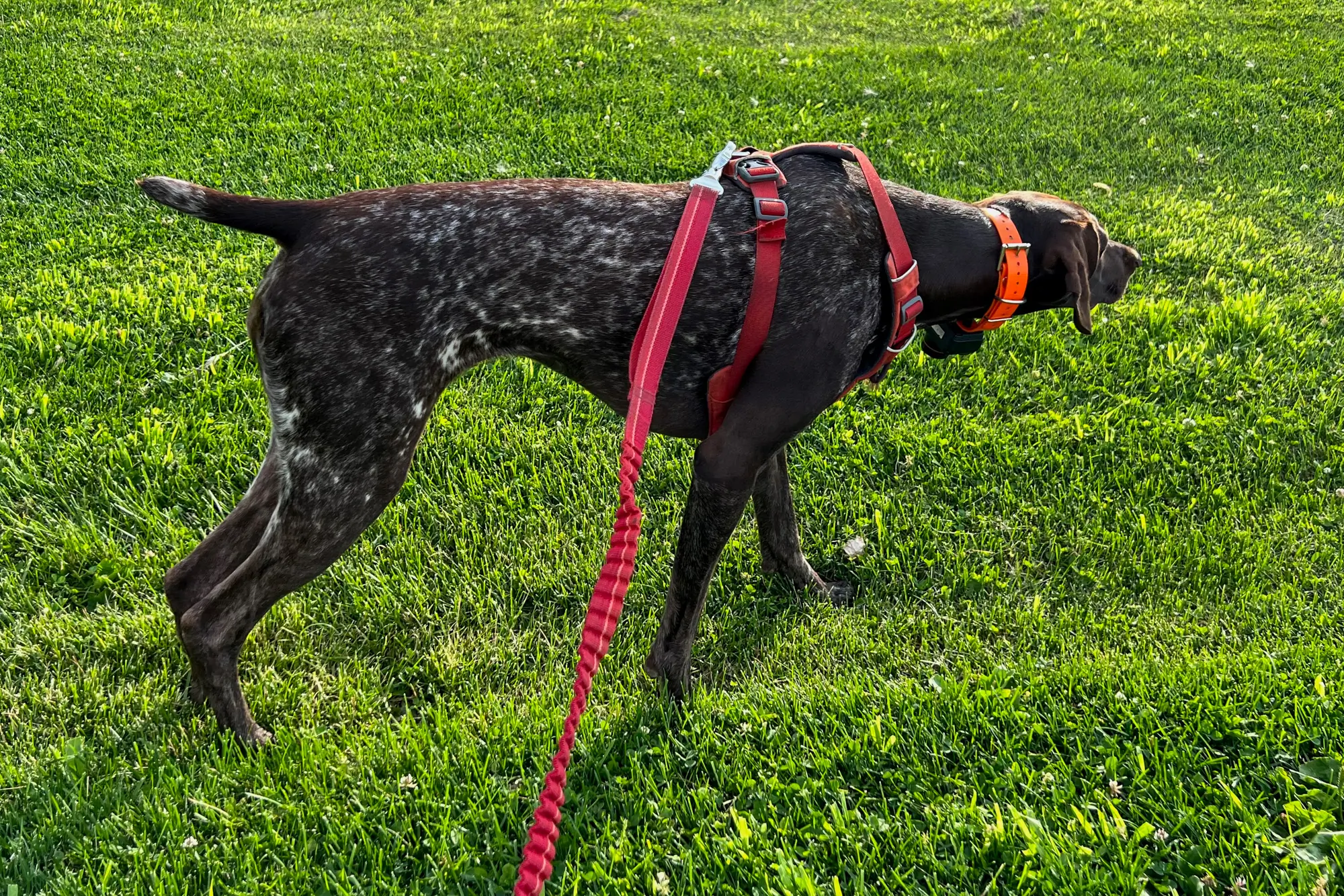
The Front Range Dog Harness has been at the top of our best dog harnesses article for a few years now. And while I didn’t pen that piece, I have to agree with the author. It’s hard to argue against that harness. It just works.
How do I know? Well, in the 5 years that I’ve worked with my adventure pooch, we’ve put some big miles on together. In the summer, we hike, trail run, camp, and sometimes climb mountains. She’s a fantastic athlete and hiked the Four Pass Loop carrying her own pack. In the fall, we shift hard into hunting mode, where she’s a reliable if overly aggressive pointer trained mostly on wild pheasants.
In the winter, she pulls me on cross-country skis and is one of the best skijoring dogs I’ve ever seen. Thus, the pulling.
So to say we’ve tested the Front Range Dog Harness is an understatement. We literally destroyed one, finally wearing the metal attachment ring through the very tough fabric of the harness until it broke after about 3 years of use.
Then we got another one.
Ruffwear Front Range Dog Harness Review
Here’s what I learned. First, the Ruffwear Front Range Dog Harness is easy to put on. Two buckles disconnect to basically open the harness into a large collar. Slide this loop over your dog’s head. Then, reach under its belly, grab the two buckles, and attach them to the center of the harness over the middle of the dog’s back. Click, click, done.
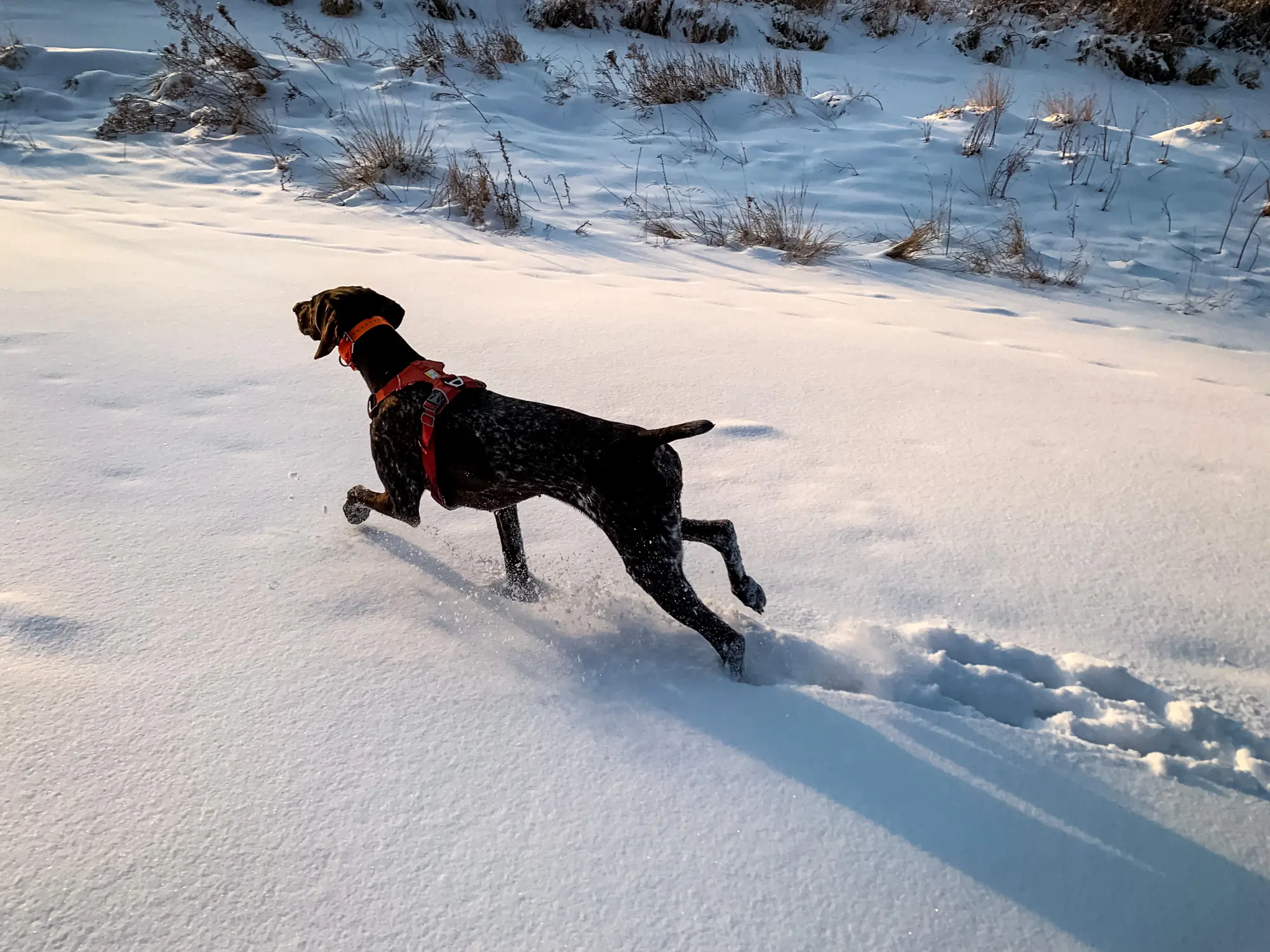



You don’t need to lift the dog’s paws or pass their legs through any loops like some harnesses. For ease of entry, this harness is great. I appreciate this every morning while bleary-eyed, half-asleep me harnesses up my dog for a pre-dawn run.
Adjusting the harness for a specific dog is pretty easy, and you only need to mess with the adjustments every month or two if it loosens up over time. It’s a simple slide-lock buckle system and takes less than a minute to adjust. The harness does come in multiple sizes, so you want to get a good measurement before you buy one. My 50-pound GSP wears a medium, and it fits her perfectly.
Attachment Points
There are two attachment points once you get ready to go: one on the back, which allows the dog to pull as hard as it wants, and one on the chest, which makes pulling awkward for the dog by twisting it to the side when it pulls.
For most of my daily runs with my dog, I use the primary back attachment clip point. Leika tends to pull early during our runs and will struggle through the side-pull discouragement. As I do worry that she could slightly injure herself by pulling against this attachment point, I just clip it on the back and full-send it for the first few hundred yards of my warmup.
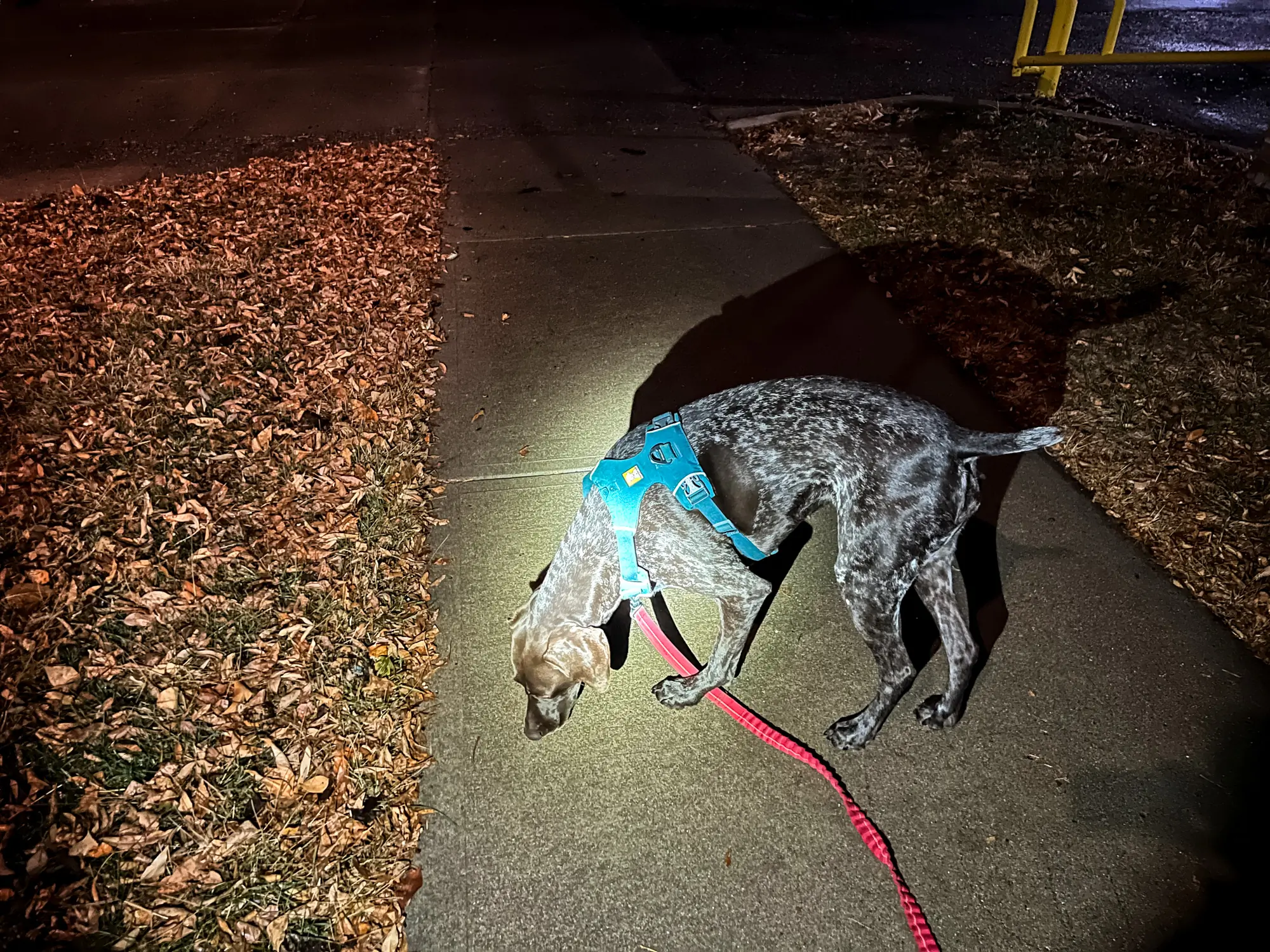



Once she’s gotten the wiggles out, my dog runs close to me for the next couple of miles. Here, I can attach the front “anti-pull” part of the harness. But generally, while running, I just leave it attached to the back.
When walking, it’s another story. My wife and I like to call the front attachment point her “good dog mode.” Outside of extreme excitement, this front-attachment point acts as enough of a deterrent that my pup won’t pull hard. She realizes that it’s uncomfortable and just stops tugging.
For those who own GSPs and know about the half-hitch-around-the-belly method, well, the harness accomplishes a similar goal, but without eliciting weird stares from non-sporting dog people. It doesn’t work quite as well, but it’s close enough.
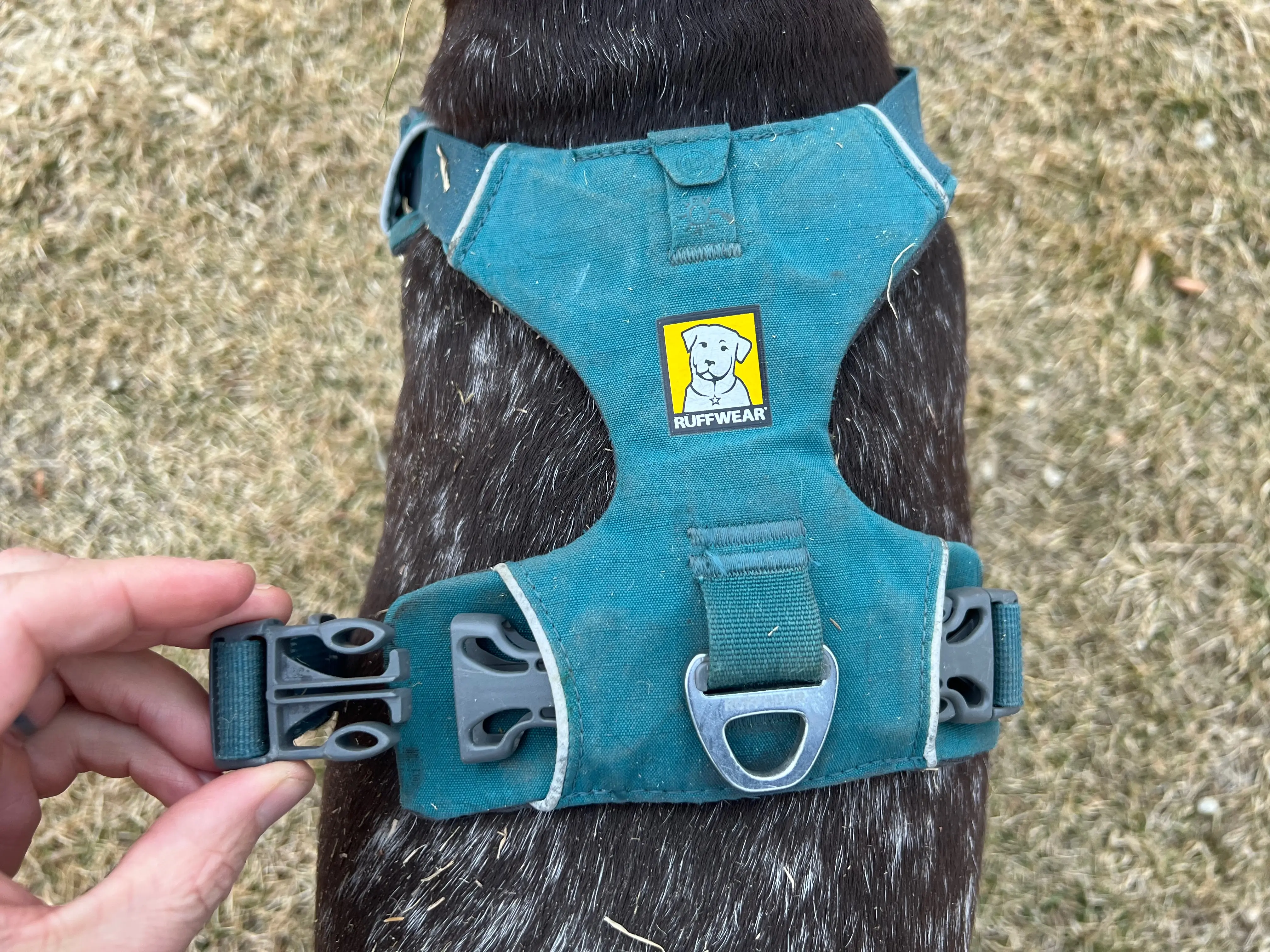



Who Should Try This Harness?
To me, the Front Range Dog Harness is the perfect everyday-use dog harness. It’s easy to put on and take off. It seems comfortable on the dog. It doesn’t show much dirt and dries relatively quickly when wet. And it doesn’t restrict a dog’s movement in any way.
For humans with pulling dogs, it offers a way to restrict the pulling behavior somewhat. It also allows a safe attachment point for rambunctious pooches on the back when a little pulling is unavoidable, like a GSP walking past a flock of geese.
Also, the harness is very durable. A spunky German shorthair pointer put one through incredible abuse for 3 years before it needed replacing. So, for those looking for a long-lasting, easy-to-use dog harness, don’t hesitate to try the Ruffwear Front Range Dog Harness.
